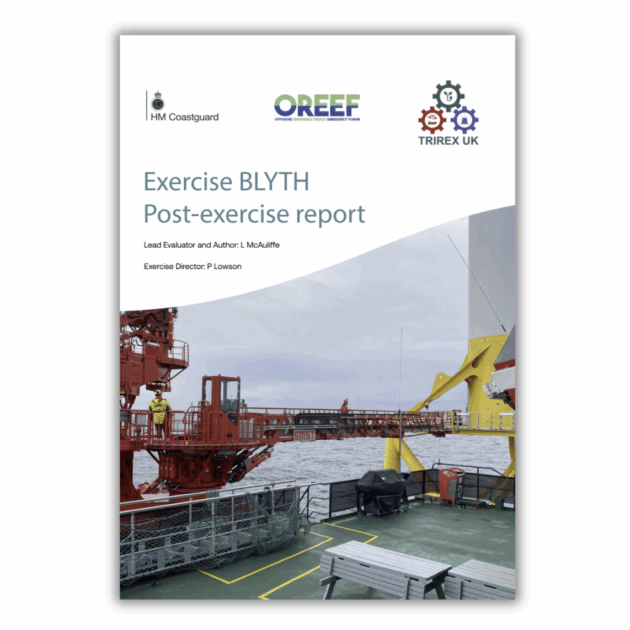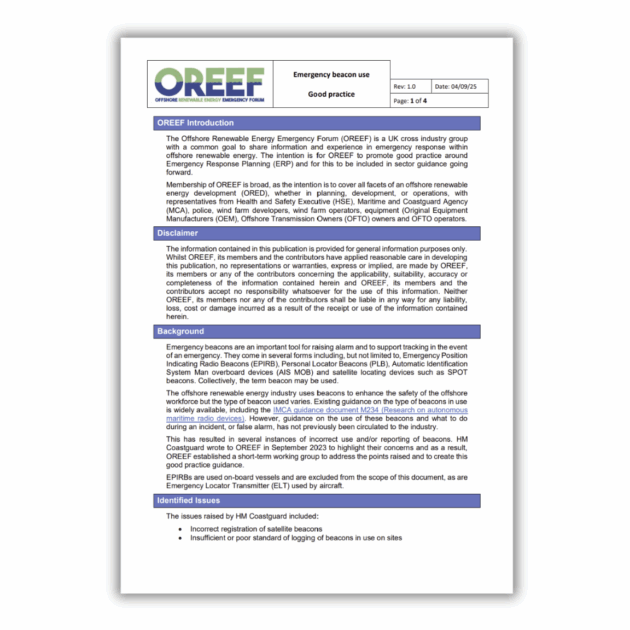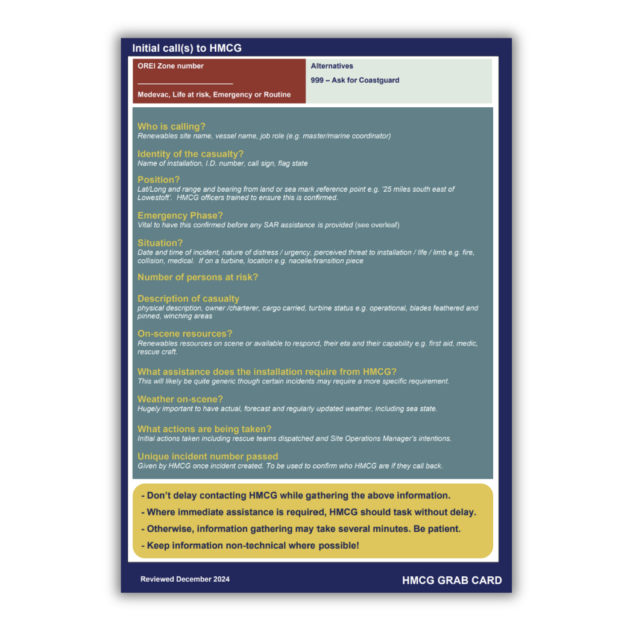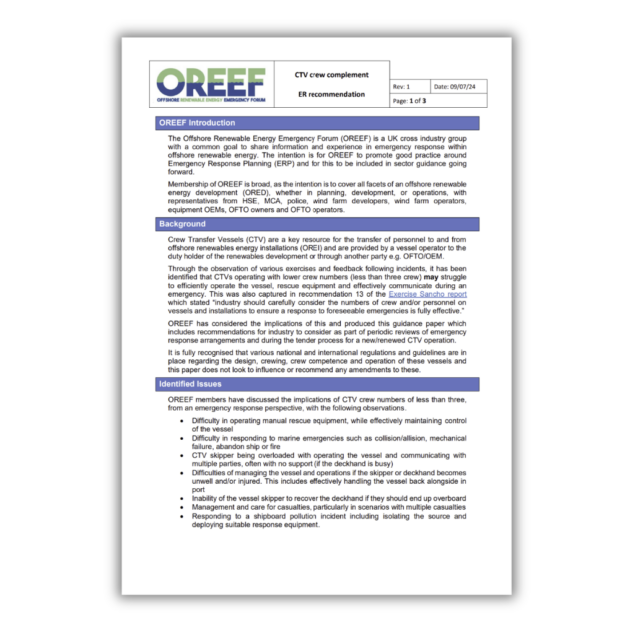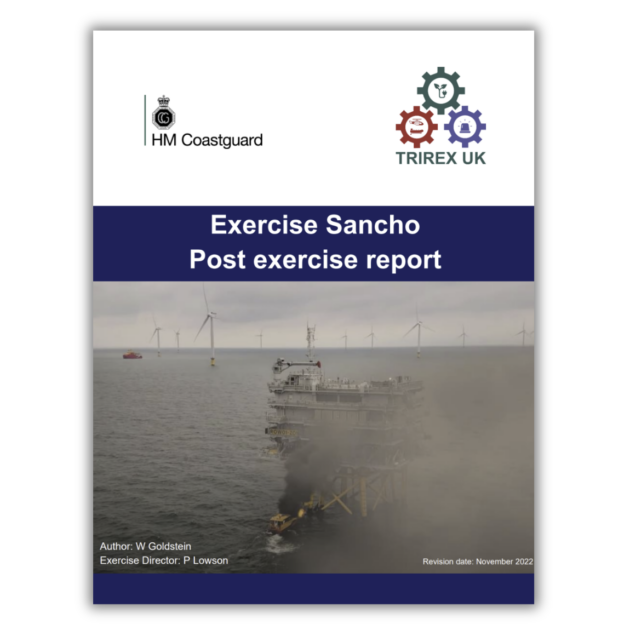About OREEF
The Offshore Renewable Energy Emergency Forum (OREEF) is dedicated to promoting emergency preparedness and response strategies for the growing offshore renewable energy sector, particularly wind energy. As offshore wind farms expand in size and capacity, OREEF ensures that emergency services, operators, and industry stakeholders are aligned in their approach to managing risks unique to renewable installations.
OREEF facilitates collaboration across multiple sectors, focusing on the development of safety protocols and the coordination of response efforts in case of incidents such as turbine malfunctions, vessel collisions, or extreme weather events. With the rapid expansion of offshore wind farms, OREEF ensures that the industry is equipped to manage potential emergencies while prioritizing the safety of workers, assets, and the environment.
By regularly engaging with renewable energy companies, emergency services, and governmental agencies, OREEF ensures a unified approach to risk management, incident prevention, and rapid response in the offshore renewables industry.
TRIREX: Collaborative Industry Emergency Exercise
TRIREX (Triennial Renewables Exercise) is a unique initiative organised through OREEF to validate and enhance the effectiveness of emergency response planning for the offshore renewable energy sector. This collaborative industry exercise, held every three years, utilises live resources to provide significant learning opportunities for industry stakeholders and valuable training for search and rescue agencies.
The primary aim of TRIREX is to “test industry and the emergency service's emergency arrangements and procedures in response to a significant offshore renewables emergency.” The exercise offers a real-world platform to evaluate current emergency plans, ensuring readiness for any offshore incident.
There are opportunities for organisations to sponsor TRIREX, helping to enhance the exercise by adding extra capabilities such as the production of an exercise video or the involvement of specialist consultants. If you’re interested in supporting TRIREX, please get in touch with the team through the OEER contact form.
Each TRIREX exercise focuses on an individual offshore renewable site, with support from partner organisations. Alongside the live exercise, a tabletop exercise will also be conducted to allow wider engagement from the industry. Observers will have the chance to interact with the exercise, either in person or remotely, providing even greater opportunities for learning and collaboration.
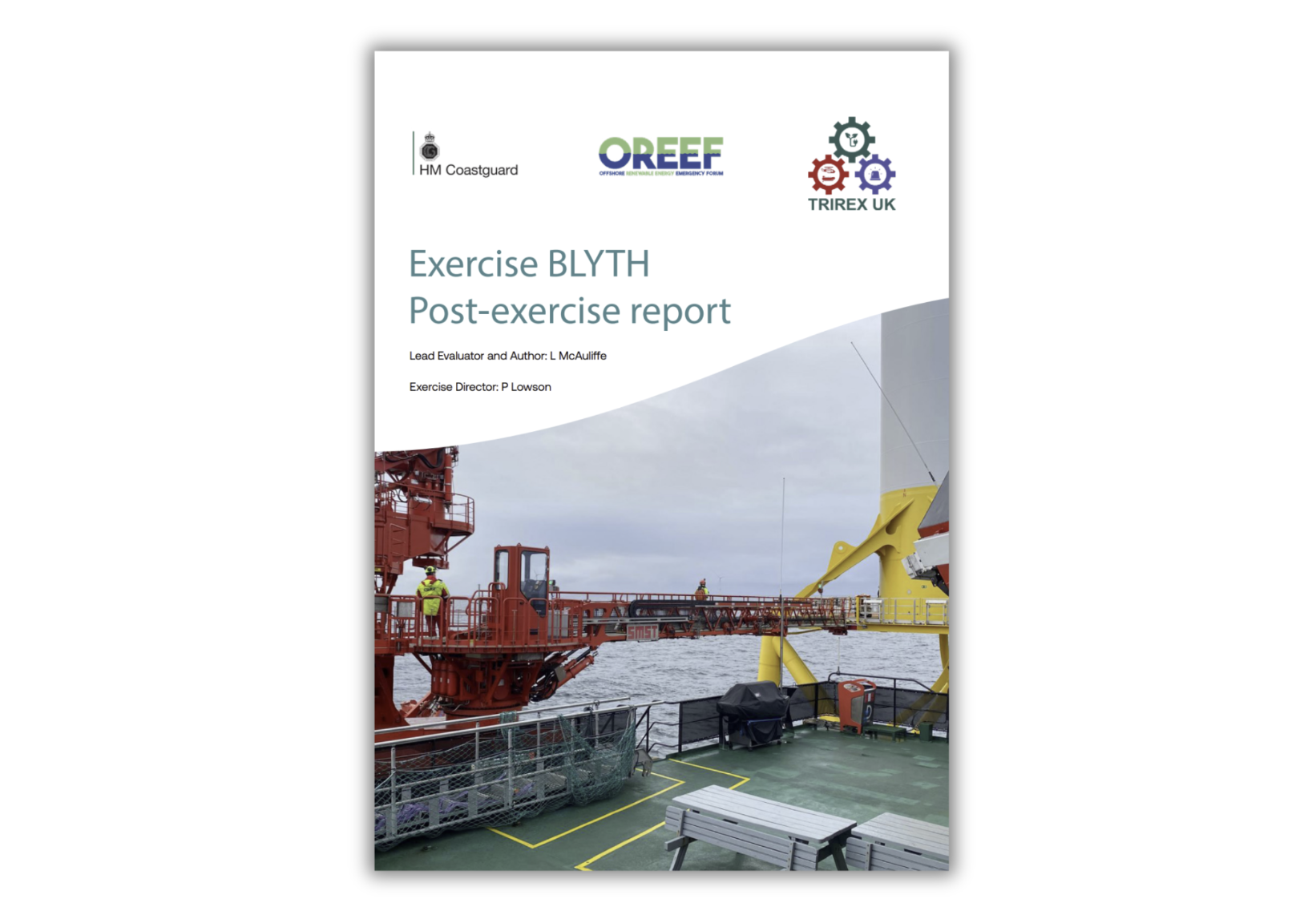
Exercise Blyth Post-Exercise Report 2025
This final report presents the findings and recommendations from Exercise Blyth, a large-scale offshore renewables emergency response exercise held in June 2025 and led by the Maritime and Coastguard Agency (MCA), with support from the Offshore Renewable Energy Emergency Forum (OREEF). The exercise tested multi-agency coordination, industry preparedness, and emergency response arrangements across the offshore wind sector.
The Exercise Sancho Post-Exercise Report provides a detailed analysis of a large-scale emergency response exercise involving the offshore renewables industry. The report offers insights into the effectiveness of procedures, coordination between agencies, and lessons learned for improving future emergency responses.
There are no TRIREX exercises currently in development, following the successful completion of Exercise Sancho in 2022 and Exercise Blyth in 2025. However, OREEF will be looking to organise TRIREX 2028 with planning likely to start in 2027. If you are interesting in being involved in that exercise, please note your interest via the OEER contact form
OREEF Publications
-
Published on 18 Oct 2025
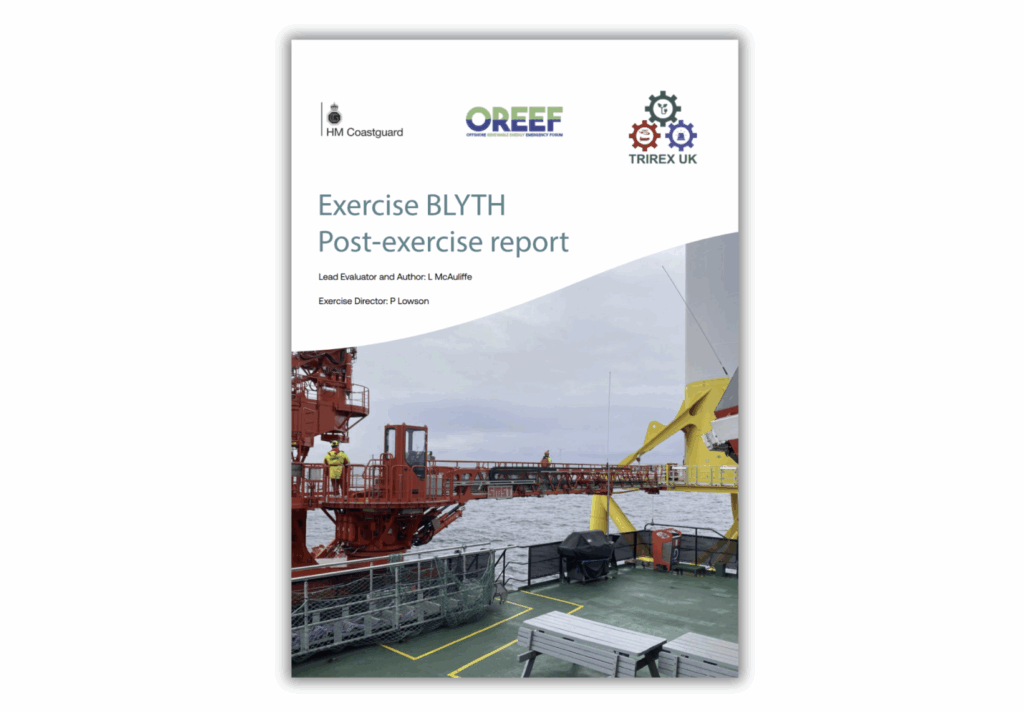 FREE
FREEThis final report presents the findings and recommendations from Exercise Blyth, a large-scale offshore renewables emergency response exercise held in June 2025 and led by the Maritime and Coastguard Agency (MCA), with support from the Offshore Renewable Energy Emergency Forum (OREEF). The exercise tested multi-agency coordination, industry preparedness, and emergency response arrangements across the offshore wind sector.
Quick View -
Published on 10 Sep 2025
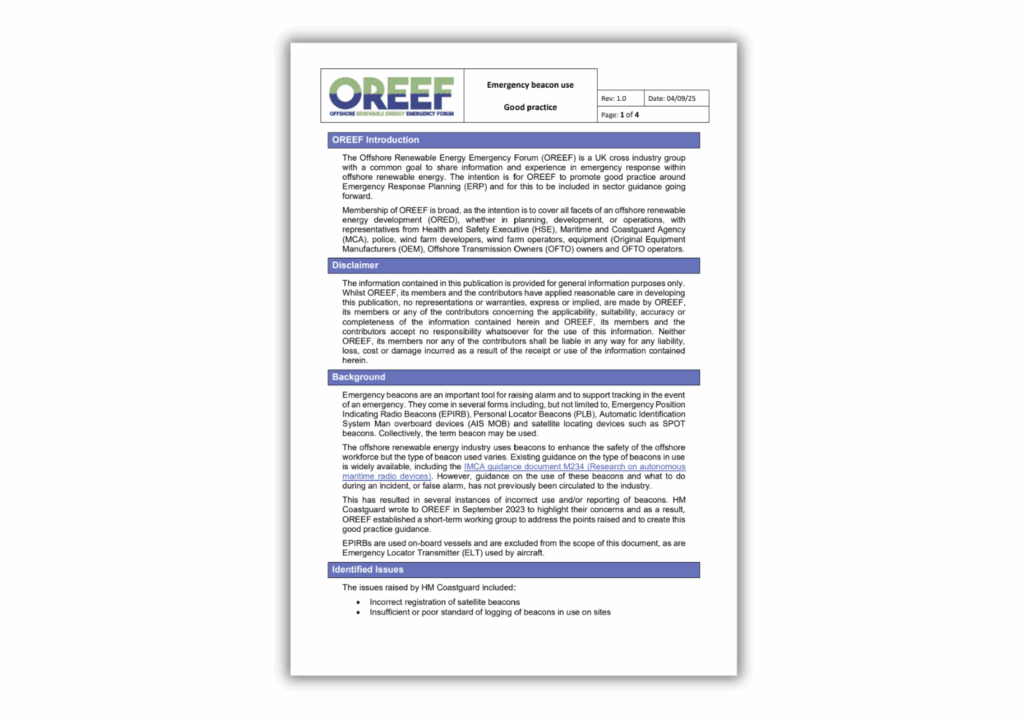 FREE
FREEThis good practice guidance, developed by the Offshore Renewable Energy Emergency Forum (OREEF) in collaboration with HM Coastguard (HMCG), sets out clear recommendations for managing and using emergency beacons in offshore renewable energy operations. It addresses key issues raised by HMCG, including poor registration, logging gaps, and a lack of familiarity with activation procedures, particularly during false alarms or incidents.
Quick View -
Published on 19 Dec 2024
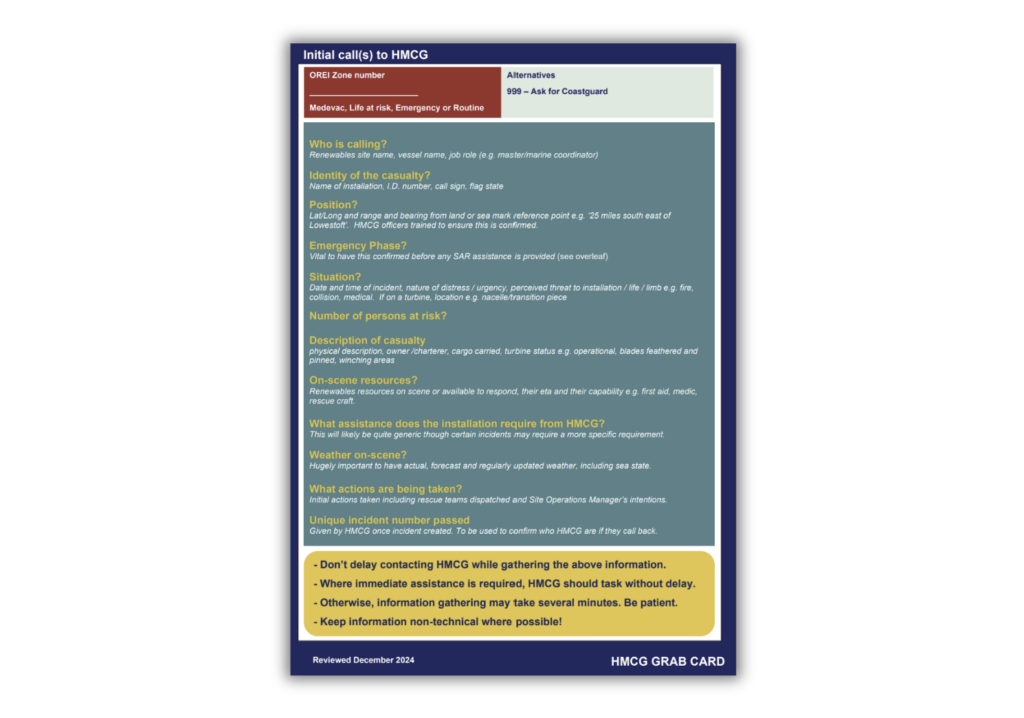 FREE
FREEThe HMCG Grab Card for Renewables is a vital resource for offshore renewable energy operators, providing a clear communication framework for contacting HM Coastguard (HMCG) during emergencies. Tailored to the unique needs of the renewable sector, it ensures efficient coordination of Search and Rescue (SAR) efforts to safeguard personnel and assets.
Quick View -
Published on 4 Nov 2024
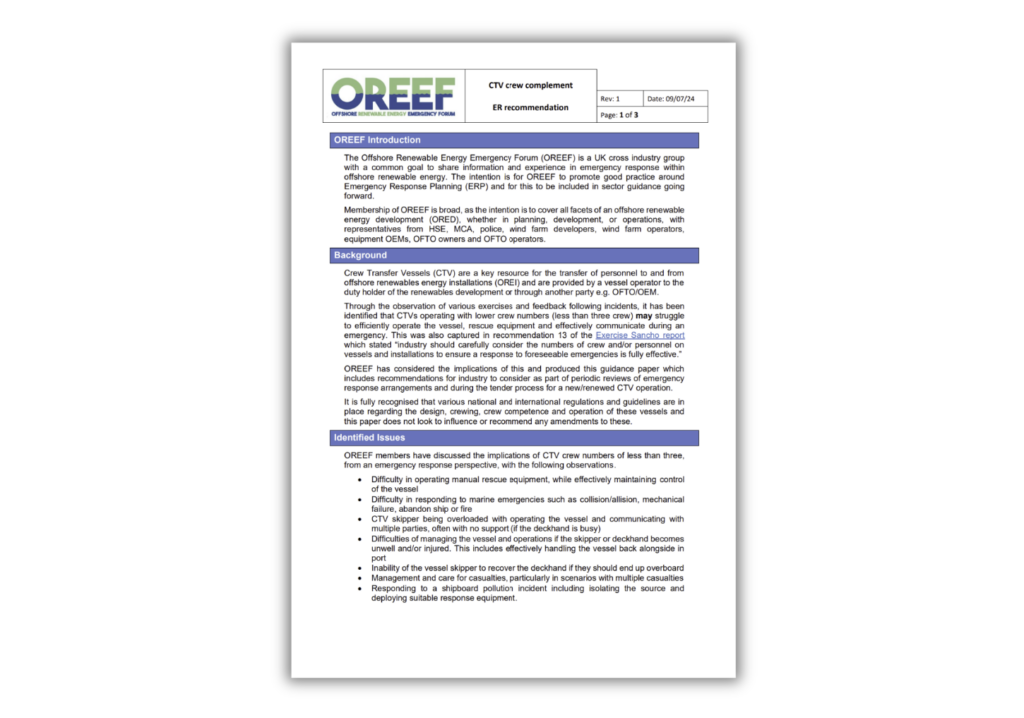 FREE
FREEThe OREEF Crew Transfer Vessel (CTV) Crew Recommendations document provides essential guidance for offshore renewable energy operators on the optimal crew size for CTVs to enhance safety and emergency response capabilities. This guidance, developed by the Offshore Renewable Energy Emergency Forum (OREEF), addresses the challenges of operating CTVs with fewer than three crew members, emphasizing the need for sufficient staffing to manage vessel control, communication, and emergency response in offshore environments.
Quick View -
Published on 2 Nov 2024
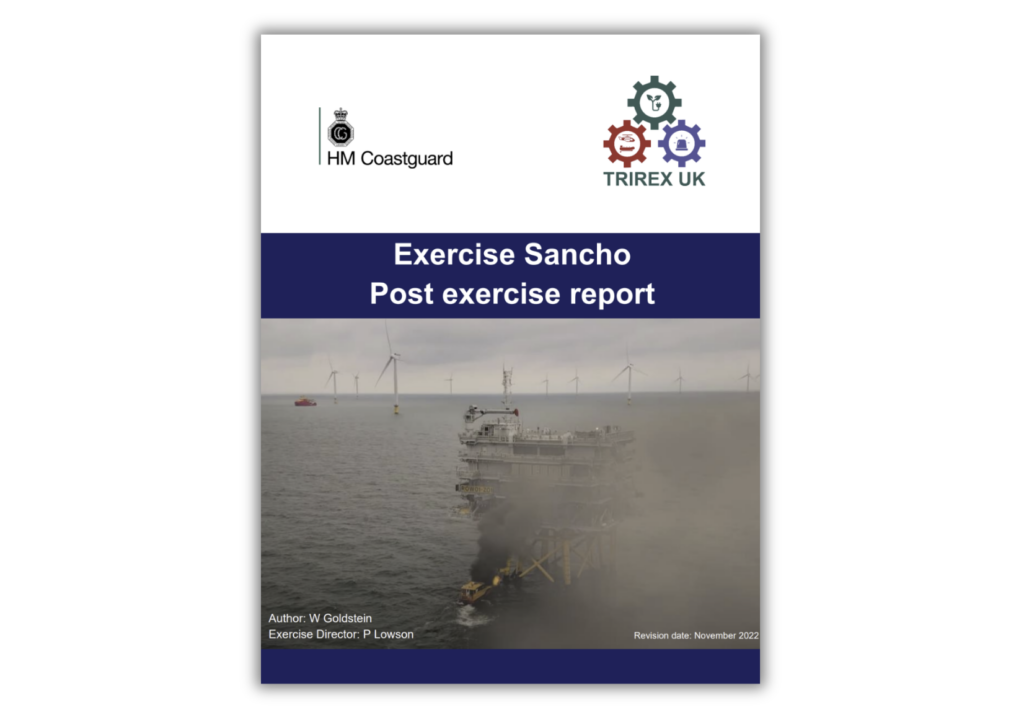 FREE
FREEThe Exercise Sancho Post-Exercise Report provides a detailed analysis of a large-scale emergency response exercise involving the offshore renewables industry. The report offers insights into the effectiveness of procedures, coordination between agencies, and lessons learned for improving future emergency responses.
Quick View


